双语阅读|为什么我们都甘愿成为熊猫奴
时间:2017-05-05 15:15:00 来源:http://www.pinghe.com 作者:Cara
如果熊猫长成这样,很有可能存活不到今天,更谈不上集万千宠爱于一身。

全世界各地人民对熊猫近乎狂热的爱远远没有熊猫看起来很可爱那么简单。
最近荷兰心里学家表示熊猫的长相和行为充分激发了人类保护欲。所以目不转睛的看了好几遍熊猫吃竹子的视频的行为(说的就是你),只是我们的本能而已。
对熊猫的爱其实更能让我们看清自己呢。
Look at him sitting there now, chewing on his stick. That fuzzy pelt. Those big black eyes. Is it a wonder that in every city that rents a pair of pandas, he is brought in swathed in a cloud of tenderness? No surprise that the World Nature Fund embraced him in 1961 as the icon for all poor animals. What a sweetheart!
它坐在那里嚼着竹子。那毛茸茸的身体和两个大大的黑眼圈,让很多不爱凑热闹的世界人民都挪不动步。1961年,它还成为了世界自然基金会的标志,为地球上所有的动物代言。

But that's because of what's between the ears -- your ears, to be precise. When it comes to winning people's hearts, the panda has every advantage, says cognitive psychologist Mariska Kret of Leiden University. The giant panda taps into what experts call the "baby effect", a tickling feeling deep in the stomach, the melting sensation that takes control of us when we see an infant. A deep primal instinct meant to stimulate a desire to care for babies.
这都是有原因的,而且主要原因是在我们。荷兰Leiden大学认知心理学专家Mariska Kret表示熊猫有着其他动物不具备的讨人喜爱的气质。这种气质在心理学里被成为“婴儿效应”。这是人类看到婴儿时的一种心要融化的直觉。这种直觉则产生于人类保护下一代的本能。
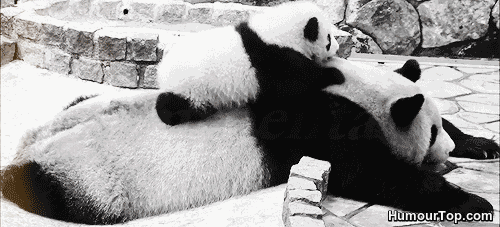
Indeed, and here comes the Ailuropodia melanoleuca waddling over, with those black eye patches of his. As if he had big, dark puppy eyes.
你可能不知道熊猫的学名是Ailuropodia melanoleuca。当这种有着黑眼圈的动物摇摇晃晃得向你走来的时候,你会本能的联想到有着大眼睛的婴儿。
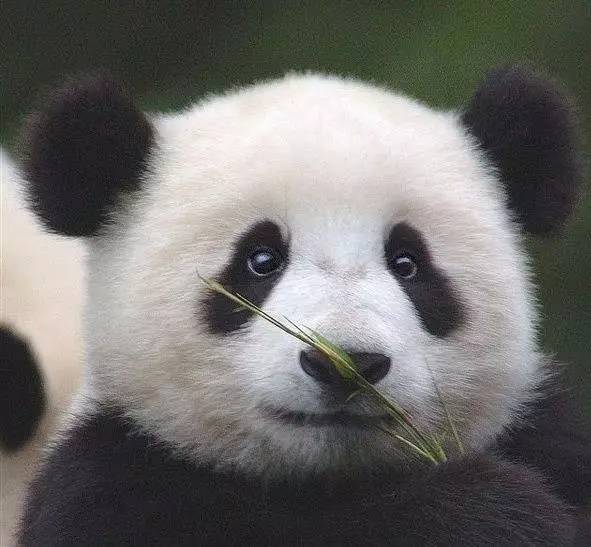
Young children's eyes, even their pupils, are proportionately bigger. We experience that as attractive, safe, innocent and positive, says Kret. "The panda's eye patches, moreover, sit just right, with the corner of the eye lower, a shape that people associate with supplication and subservience. Turn them the other way around and you get an angry looking face," she says.
从比例上讲,婴儿有着比成人更大的瞳孔,所以眼睛也会看起来更大。我们会本能觉得这代表着吸引人,安全,无辜和正面,Kret表示。“熊猫黑眼圈的位置也是恰到好处。它是向下倾斜的,这种形状会让人产生恳求和服从的感觉。如果把熊猫的黑眼圈换个方向,就会产生完全不同的效果。你会看到一张生气的脸。”她说。
"In nature, black eyes have a totally different meaning. They're a sign of threat, danger, I'll eat you up," says Kret. "Actually, that's the real reason they have those eye patches. Not to attract, but to scare off."
在自然界,熊猫的黑眼圈和招人喜欢却一点关系都没有。它们是威胁,危险,我要吃掉你的意思。它们进化出黑眼圈是为了吓走敌人,而不是吸引它们,Kret表示。
How could a panda know we think of him as a big, cuddly baby. That's his good fortune. "If his eye patches were turned the other way, he would perhaps have gone extinct long ago," she muses.
熊猫自己并不知道自己被人类看作蠢萌的大宝贝,这只是命好罢了。“如果他们的黑眼圈换个方向可能早就灭绝了。”
Add to that the little snout. The corners of the mouth that seem eternally to smile. Little, round ears on top. A head that, because of its white coloring, looks large in relation to the body. It's like a baby, huggable and oh, how sweet!
另外,熊猫的嘴看起来是在微笑的。它还有着较小的鼻子和圆圆的耳朵。因为他头部的毛是白色的,这样看起来就会比较大。简直就是个可爱的让人想抱抱的大宝宝。
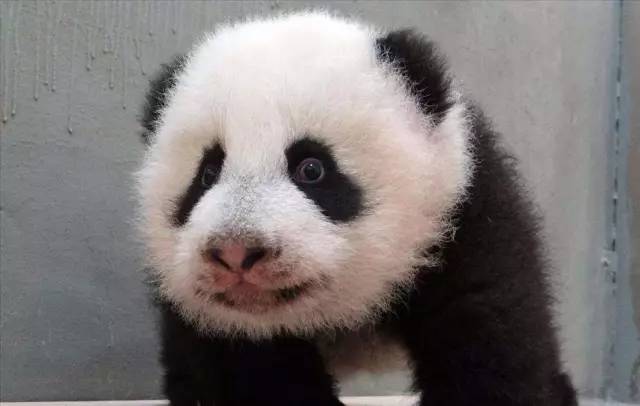
In an experiment that became famous, Alexander Todorov of Princeton University, worked out what kind of face we perceive as inspiring trust. What he came up with looked like a baby: an open, smiling face, with big eyes, rounded shapes and a small nose.
美国Princeton大学的Alexander Todorov曾经做过一个关于人脸的著名实验。实验结果就是有着较宽阔的的脸以及嘴角上扬,圆圆的大眼睛和小鼻子的人容易得到他人信任。熊猫的长相正是如此。
What's more, the giant panda behaves like a big baby. In Tokyo, Kret once saw one in a zoo. "With a pile of bamboo on his lap, as though it were a bowl of popcorn," she says. "But not a person. We like that, when we can recognize something of ourselves in animals."
除此之外,熊猫的行为也像婴儿。在荷兰终于千辛万苦租借来两只熊猫之前,Kret曾经在东京见过熊猫实物。“它们把一堆竹子放在腿上,就像在吃一大桶爆米花。人们喜欢看到动物有和我们相似的行为。”她说。
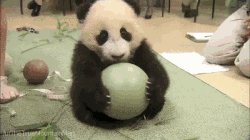
几年前,在英国租借到两只熊猫的时候,BBC也请专家分析了一下为什么人们会如此喜欢熊猫。
One of the main reasons we love pandas is that they remind us of ourselves, says Ron Swaisgood, Director of Applied Animal Ecology, San Diego Zoo Institue for Conservation Research.
在接受采访的时候,时任美国圣地亚哥动物园保护研究所应用动物生态学主任Ron Swaisgood表示,人们喜欢熊猫的最主要原因是它们让我们想到自己。
"They eat sitting up using their hands and their special pseudo thumb, which is actually a modified wrist bone," he told the BBC News website.
“它们不仅坐着吃东西,还像人一样用“大拇指”抓食物。其实熊猫的“大拇指”其实是手腕骨。”他说。
Zoo visitors love to watch Pandas eating and are often amazed by the way they handle their food with considerable dexterity - thanks partly to that "pseudo thumb", which functions as a sixth digit.
动物园游客尤其喜欢看熊猫吃东西并惊讶于熊猫拿食物的灵巧程度。这都要归功于它们的“大拇指”。
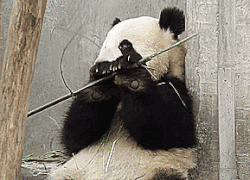
The classic pose for a panda eating is one that resembles the way humans sit on the floor.
而它们经典的进食姿势让我们联想到自己坐在地上的样子。
好吧,看来我们人类生来就对熊猫毫无抵抗力。小编认命,再去看一遍熊猫吃竹子的视频去了。
------------------------------
一日一记:
Life is a journey, not the destination, but the scenery along the should be and the mood at the view.
人生就是一场旅行,不在乎目的地,在乎的应该是沿途的风景以及看风景的心情。
人生就是一场旅行,不在乎目的地,在乎的应该是沿途的风景以及看风景的心情。
(本文版权归原作者所有,如有侵权请立即与我们联系,我们将及时处理。)
本文链接:https://www.pinghe.com/StudentStyle/learning-material/2017-05-05/2003.html
更多内容
- 英语学习|关于"工作"的几个英语说法2017-05-04
- 英语学习|外出一定要懂这几句哦!2017-05-02
- 英语学习|跟人道歉,说“sorry”也是错?!2017-04-28
- 英语学习|这些常用又易错的英语2017-04-27
- 英语电影|近年必看20部恐怖片!(上)2017-04-26
马上评估您的学习费用

学英语目的
可支配学习时长


 全部课程
全部课程






 粤ICP备11066329号-2
粤ICP备11066329号-2
 粤公网安备 44040202000471号
粤公网安备 44040202000471号
